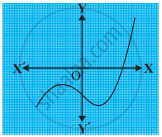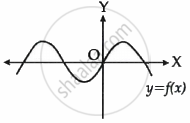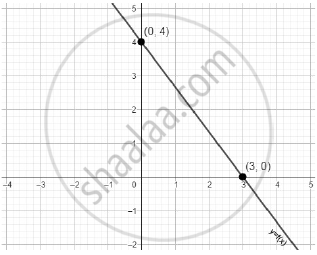Advertisements
Advertisements
प्रश्न
If the zeroes of the quadratic polynomial ax2 + bx + c, c ≠ 0 are equal, then ______.
विकल्प
c and a have opposite signs
c and b have opposite signs
c and a have the same sign
c and b have the same sign
उत्तर
If the zeroes of the quadratic polynomial ax2 + bx + c, c ≠ 0 are equal, then c and a have the same sign.
Explanation:
The zeroes of the given quadratic polynomial ax2 + bx + c where c ≠ 0, are equal.
If coefficient of x2 and constant term have the same sign i.e. c and a have the same sign.
While b i.e., coefficient of x can be positive or negative but not zero.
Consider,
(i) x2 + 4x + 4 = 0
`\implies` (x + 2)2 = 0
`\implies` x = –2, –2
(ii) x2 – 4x + 4 = 0
`\implies` (x – 2)2 = 0
`\implies` x = 2, 2
APPEARS IN
संबंधित प्रश्न
The graphs of y = p(x) are given in following figure, for some polynomials p(x). Find the number of zeroes of p(x).

If one zero of the quadratic polynomial `kx^2 + 3x + k is 2`, then find the value of k.
Find the sum of the zeros and the product of zeros of a quadratic polynomial, are `−1/2` and \ -3 respectively. Write the polynomial.
If the zeroes of the polynomial `f(x) = x^3 – 3x^2 + x + 1` are (a – b), a and (a + b), find the values of a and b.
If the zeroes of the quadratic polynomial x2 + (a + 1) x + b are 2 and –3, then ______.
The zeroes of the quadratic polynomial x² + 1750x + 175000 are ______.
If x3 + 11 is divided by x2 – 3, then the possible degree of remainder is ______.
If 4x² – 6x – m is divisible by x – 3, the value of m is exact divisor of ______.
The graph of y = f(x) is shown in the figure for some polynomial f(x). The number of zeroes of f(x) are ______.

The given linear polynomial y = f(x) has

